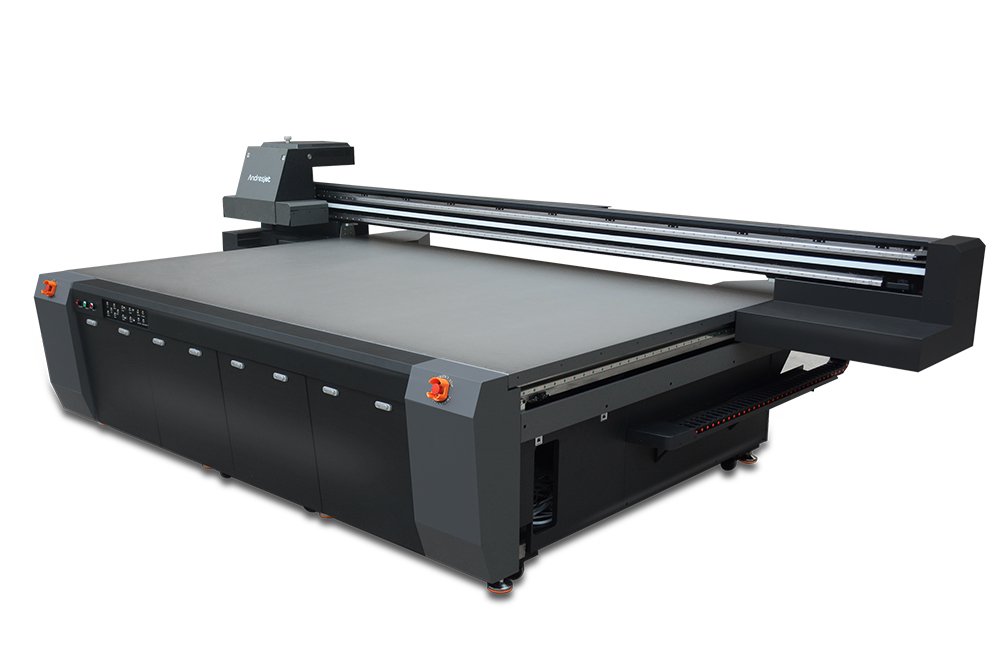Technical Insights into UV Flatbed Printer Firmware Updates
In the realm of digital printing, UV flatbed printers have revolutionized the way images and designs are applied to a myriad of substrates. These versatile machines utilize ultraviolet (UV) light to instantly cure inks, enabling high-quality, durable prints on materials ranging from glass and metal to plastics and textiles. Central to the efficient operation and continuous improvement of these printers is their firmware—the software embedded within the printer that controls its hardware and functionality. Firmware updates are crucial for enhancing performance, fixing bugs, and incorporating new features. This article delves into the technical aspects of UV flatbed printer firmware updates, exploring their importance, the update process, and the considerations involved.

The Significance of Firmware in UV Flatbed Printers
Firmware serves as the brain of a UV flatbed printer, orchestrating the intricate dance between the printer’s mechanical components, such as the print heads, motors, and UV lamps, and its electronic systems. It manages the flow of data, interprets print commands, and ensures precise control over ink deposition and curing processes. High-quality firmware is essential for achieving accurate color reproduction, consistent print quality, and reliable operation.
As technology evolves, so do the demands placed on UV flatbed printers. New materials, higher resolution requirements, and faster printing speeds necessitate ongoing improvements. Firmware updates are a critical mechanism for delivering these enhancements without the need for hardware replacements. They can optimize print speeds, improve ink usage efficiency, enhance image processing algorithms, and add support for new file formats or substrates.
The Firmware Update Process
The firmware update process in UV flatbed printers typically involves several key steps, each designed to ensure a seamless transition while minimizing downtime and risk. Here’s a detailed overview:
Preparation and Backup:
Before initiating a firmware update, it is crucial to prepare the printer and create backups of existing firmware and configuration settings. This precautionary measure allows for a quick restoration to the previous state in case any issues arise during the update process.
Downloading the Update:
Firmware updates are usually available for download from the manufacturer’s website or through a dedicated software application provided by the printer’s maker. It is important to verify the authenticity and compatibility of the update with the specific printer model and current firmware version.
Transferring the Update to the Printer:
Depending on the printer’s design, the firmware update file may be transferred via USB drive, Ethernet connection, or wirelessly. The method chosen will depend on the printer’s connectivity options and the user’s preference.
Initiating the Update:
Once the update file is on the printer, the update process can be initiated through the printer’s control panel or associated software. The printer may require a restart or enter a special mode to apply the update. During this phase, it is essential to follow the manufacturer’s instructions carefully to avoid interruptions.
Verification and Testing:
After the update is complete, the printer should be verified to ensure that the new firmware has been correctly installed. This may involve checking the firmware version through the printer’s settings menu and performing test prints to confirm that all functions are operating as expected.
Technical Considerations in Firmware Updates
Several technical considerations underpin the firmware update process for UV flatbed printers:
Compatibility: Ensuring that the new firmware is compatible with the printer’s hardware and existing software ecosystem is paramount. Incompatible firmware can lead to malfunctions, reduced performance, or even permanent damage to the printer.
Stability and Reliability: Firmware updates should be thoroughly tested in controlled environments before being released to end-users. This helps to identify and resolve any potential issues that could affect the printer’s stability or reliability.
Security: With the increasing connectivity of UV flatbed printers, security has become a significant concern. Firmware updates should include security patches to protect against vulnerabilities that could be exploited by malicious actors. Encryption, secure authentication protocols, and regular security audits are essential components of a robust firmware security strategy.
Performance Optimization: Firmware updates often include performance optimizations that can enhance print speeds, improve ink coverage uniformity, and reduce maintenance requirements. These optimizations are achieved through refined algorithms, better hardware control, and enhanced error correction mechanisms.
User Experience: The firmware update process should be user-friendly, with clear instructions and minimal disruption to the printing workflow. Manufacturers may provide automated update tools or step-by-step guides to facilitate the process.
Challenges and Best Practices
Despite the benefits of firmware updates, several challenges can arise. These include the risk of bricking the printer (rendering it unusable), compatibility issues with third-party software or hardware, and the potential for introducing new bugs. To mitigate these risks, adhering to best practices is essential:
Regular Updates: Keeping the firmware up-to-date ensures that the printer benefits from the latest improvements and security patches.
Official Channels: Always obtain firmware updates from official sources to avoid the risk of installing malware or corrupted files.
Documentation: Maintain detailed records of firmware versions and update dates. This information can be invaluable for troubleshooting and ensuring compliance with warranty requirements.
Support and Community: Engage with the printer manufacturer’s support team and user communities for assistance and to stay informed about best practices and emerging issues.
Firmware updates are a vital aspect of maintaining and enhancing the performance of UV flatbed printers. They enable these versatile machines to adapt to evolving technology and market demands, ensuring that users can achieve the highest quality prints on a wide range of substrates. By understanding the firmware update process and adhering to best practices, users can maximize the benefits of these updates while minimizing the associated risks. As UV flatbed printer technology continues to advance, the importance of regular, well-managed firmware updates will only grow, further solidifying their role as a cornerstone of modern digital printing.
